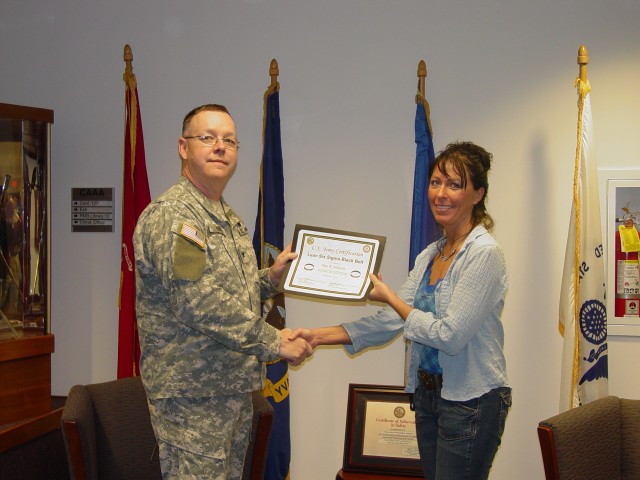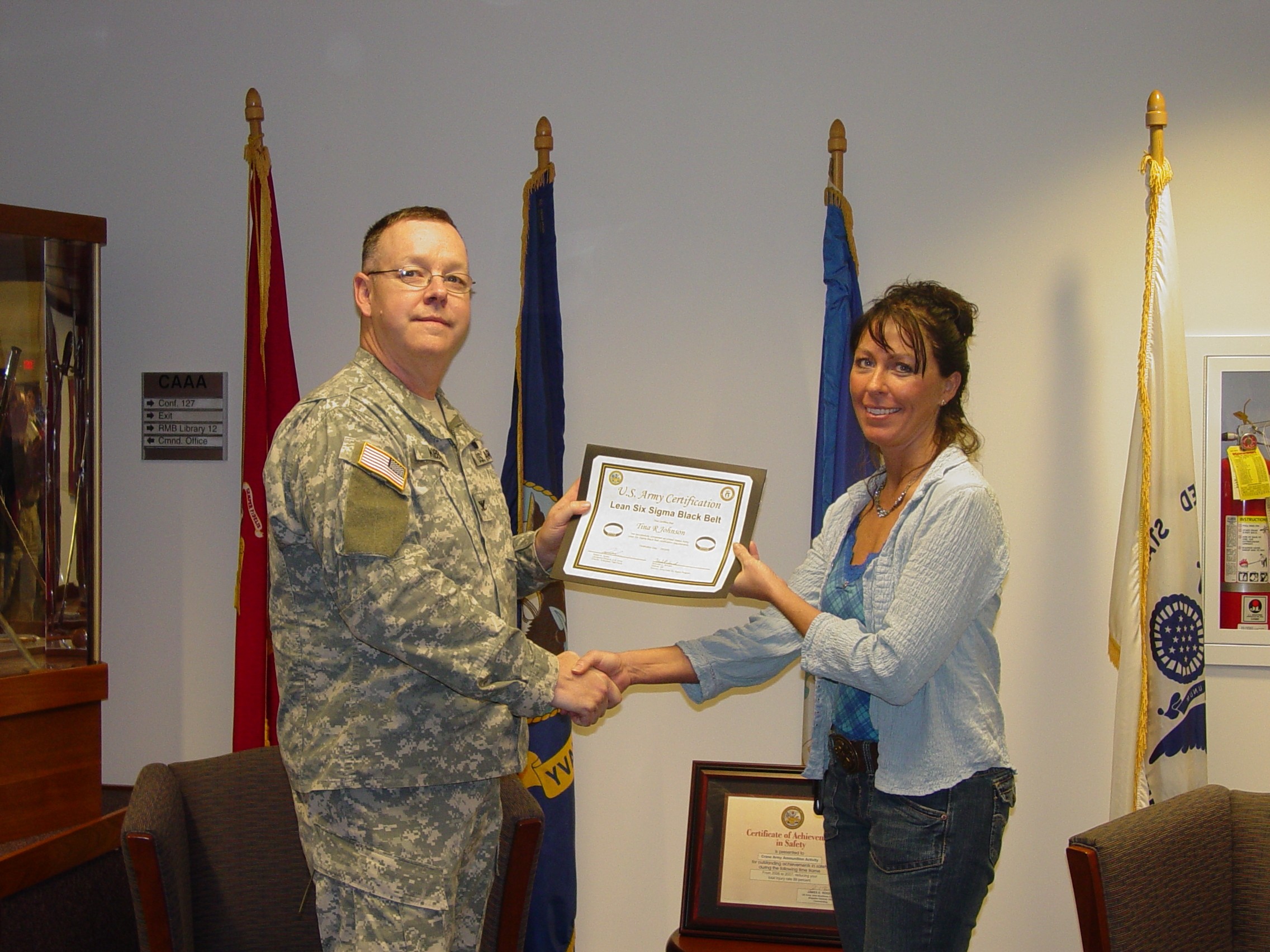Crane, Ind. - Crane Army Ammunition Activity took another important step in building its successful continuous improvement program with the recent certification of Process Improvement Specialist Tina Johnson as a Lean Six Sigma Black Belt.
The project, Optimize Infra Red/Illumination Spot Welding Process at CAAA's machine shop, involved creating a more reliable and efficient process to spot weld the support plate (lid) onto a canister.
"They had never been capable of welding the support plates that came in plated from the vendor without the plating blistering and or the nugget size not meeting requirements," Johnson said. She explained that in the past, stripping and re-plating each support plate was necessary for spot welding performance. "With the addition of flow controls to the machine, this is no longer an issue. This improvement eliminated unnecessary rework which saved man hours and chemical costs."
The benefits of the project include:
Aca,!Ac Reduced 81mm destructive testing by 54%
Aca,!Ac Reduced 120mm destructive testing by 49%
Aca,!Ac Cost Avoidance $ 130,707.80
The work on the canister project was challenging because it involved working with three different canisters depending on the production schedule. Johnson said, "The process involves three different canisters all with different weld schedules, tip configurations, material thickness, and other variables. The production switched between these three canisters throughout the project. In an effort to continuously improve with the least disruption, the project switched gears depending on the canister that was being produced."
By Johnson gaining her Black Belt certification, CAAA continues its dedication to continuous improvement. CAAA Supervisory Continuous Improvement Specialist Lara Zilafro explained it is all a part of the command's desire to run a top-of-class LSS program.
"One of the main reasons CAAA has been so successful in continuous improvement is the investment in and dedication of resources to continuous improvement pursuits," Zilafro said. "Gaining another DA certified black belt illustrates CAAA's commitment to process improvement. It is no small task to become a Dept. of Army certified LSS belt. The fact that CAAA has six certified Black Belts and four certified Green Belts only hints at the kind of dedication and perseverance our work force has. The people of CAAA are willing to recognize, face, and overcome all types of challenges to better serve our ultimate customer, the warfighter."
One prime example of the dedication and perseverance CAAA's work force displays is in strong team environment Johnson credits as the key factor to her successful project.
She said, "Nothing moves forward until there is a team consensus. This is hard to accomplish, and on certain occasions it's a matter of someone reluctantly giving their approval without really meaning it. The thing everyone has to remember is that we can try different things, but nothing changes until we know it's going to work. Not only does it have to work, but it has to work better. These improvements are monitored and statistically analyzed to ensure we are doing the right thing."
While acknowledging the team effort that was so important to successfully completing the project, Johnson noted she leaned particularly hard on one person. "During a visit with welding experts from T.J. Snow Co, Inc., CAAA Welder Stan Harper opened his mind and his notebook to take advantage of their wisdom in welding. With his knowledge of our current process and open attitude, we worked together to optimize the weld schedule and tip arrangement for the 81mm canisters."
Johnson said she would like to go on to become a Master Black Belt and is waiting her turn for the opportunity.
CAAA was established in Oct. 1977 and is a tenant of the Navy Region Midwest, Naval Support Activity Crane. The Army activity maintains ordnance professionals and infrastructure to receive, store, ship, produce, renovate and demilitarize conventional ammunition, missiles and related components.


Social Sharing